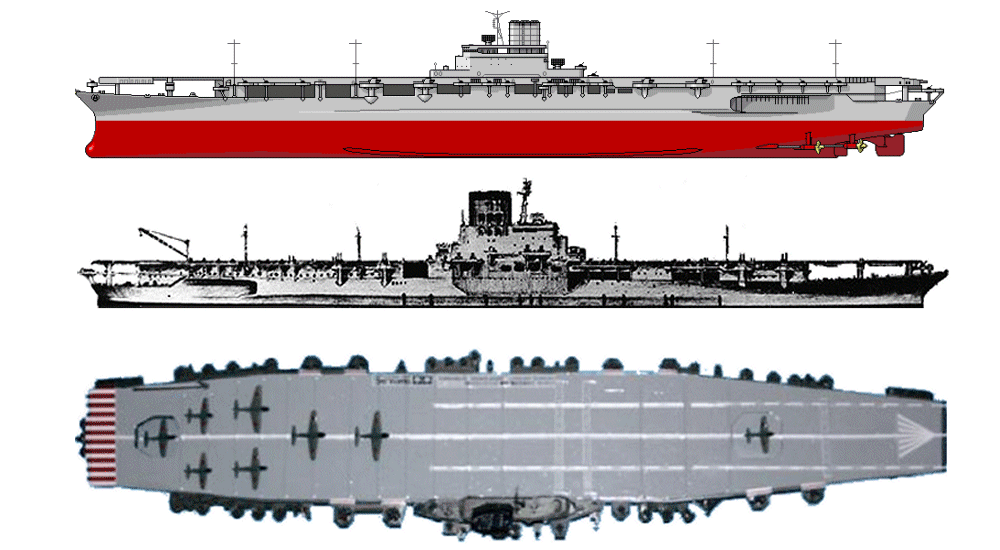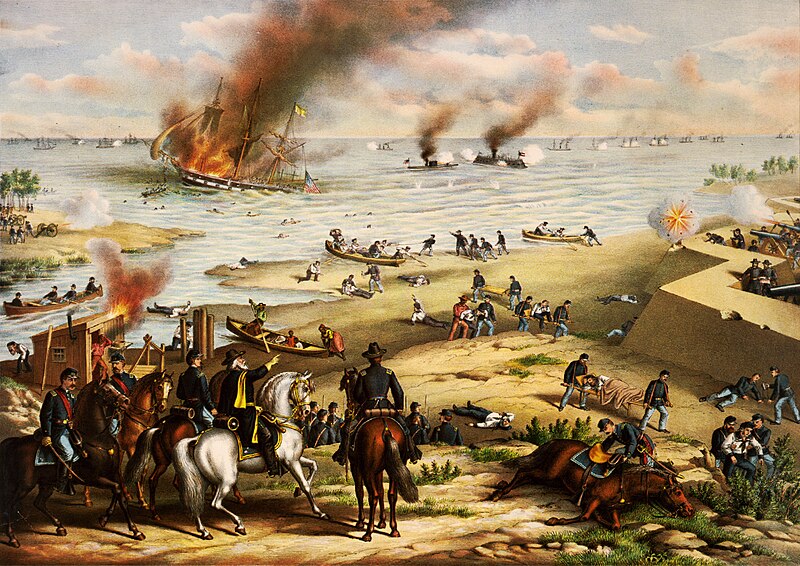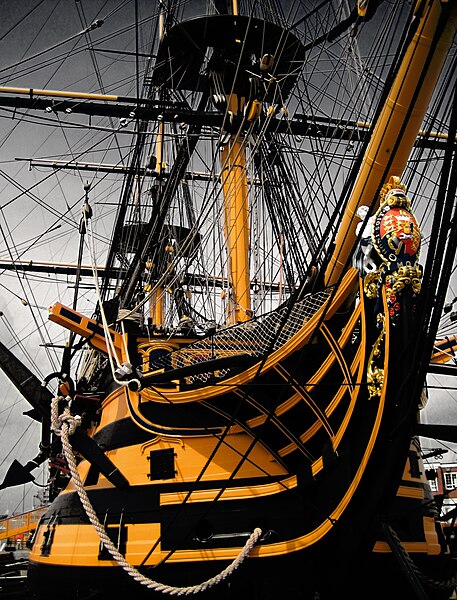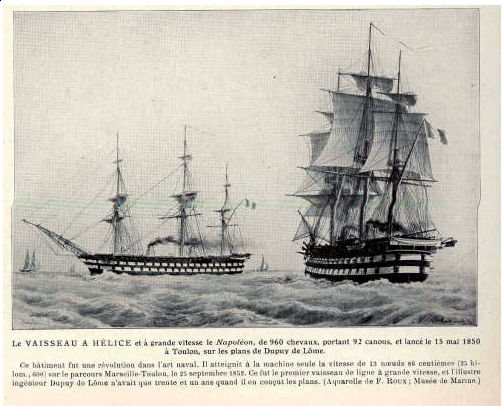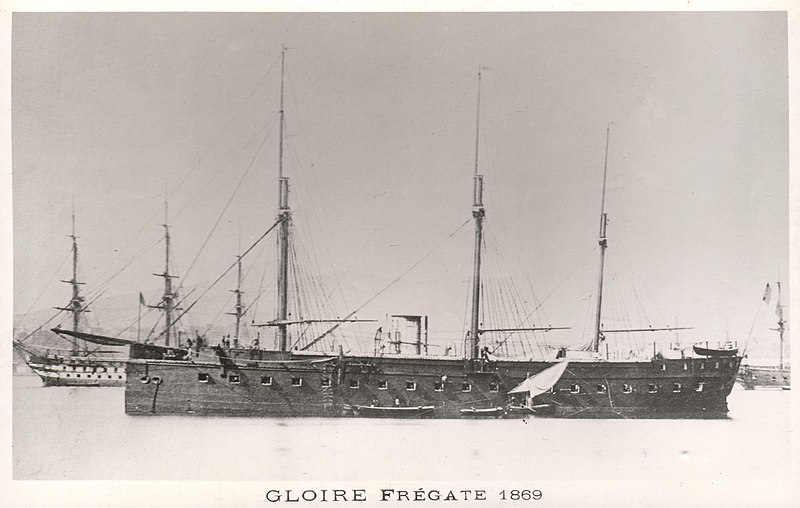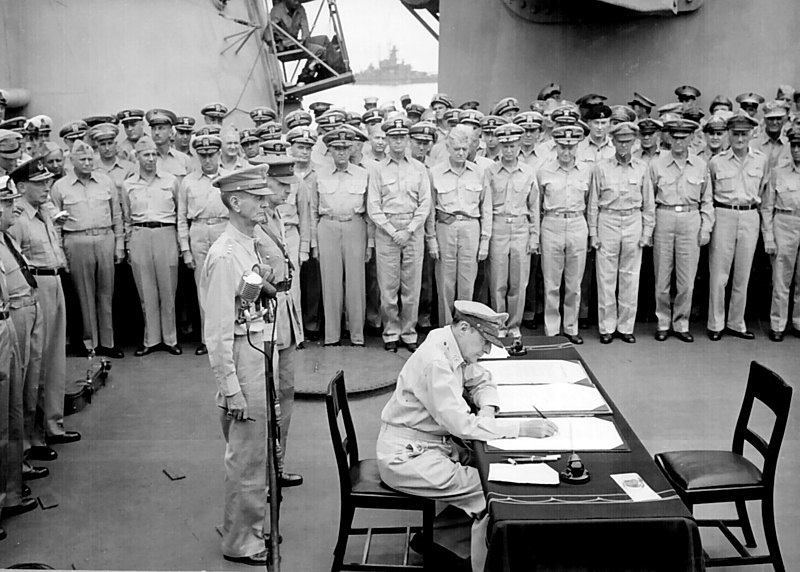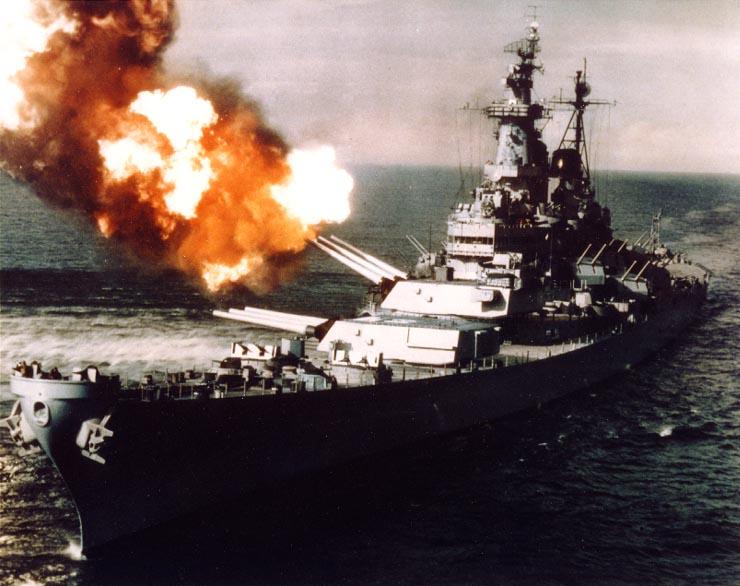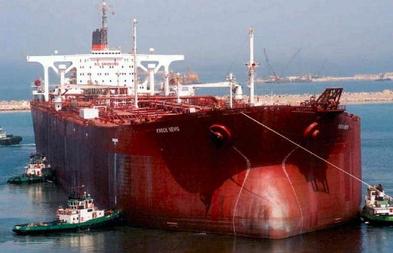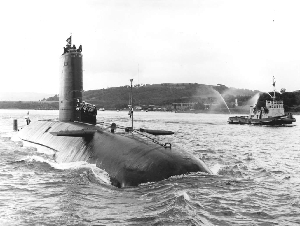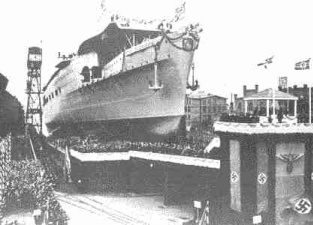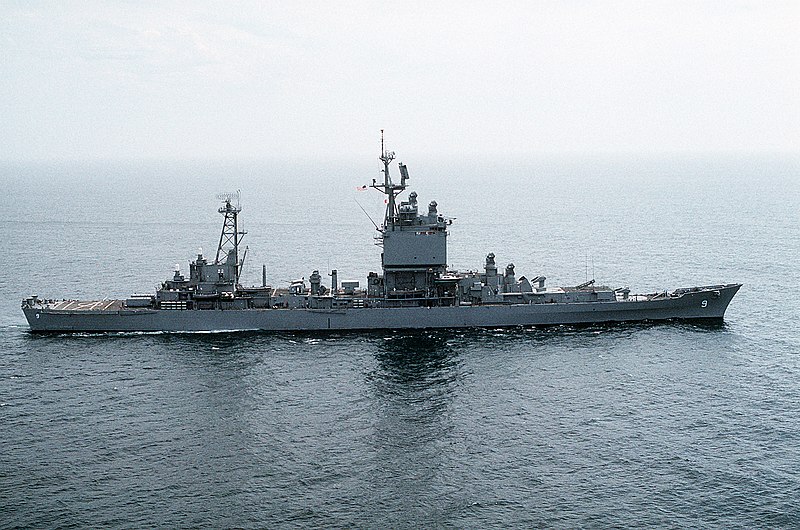USS Enterprise CV-6 The most battle-hardened ship of WWII
Nicknamed "Big E", was sixth aircraft carrier of the United States Navy and the seventh US Navy ship to bear that name. Launched October 3, 1936 at Newport News Shipbuilding. Commissioned 12 May 1938.
Class and type: Yorktown-class aircraft carrier
Displacement: As built:
19,800 tons standard
25,500 tons full load
From October 1943:
21,000 tons standard
32,060 tons full load
Length: As built:
770 feet (230 m) waterline
824 ft 9 in (251.4 m) overall
From July 1942:
827 ft 5 in overall length
Beam: As built:
83 ft 3 in (25.4 m)
109 ft 6 in (33.4 m) overall
From October 1942:
114 ft 5 in overall width
From October 1943:
95 ft 5 in waterline
Draft: 25 ft 11.5 in (7.91 m)
Propulsion: 9 × Babcock & Wilcox boilers
4 × Parsons geared turbines
120,000 shp (90 MW)
4 × screws
Speed: 32.5 knots (37.4 mph; 60.2 km/h)
Range: 12,500 nautical miles (23,150 km; 14,380 mi) at 15 knots (17 mph; 28 km/h)
Complement: 2,217 officers and men (1941)
Sensors and
processing systems: CXAM-1 RADAR[1]
Armament: As built:
8 × single 5 in/38 cal guns
4 × quad 1.1 in/75 cal guns
24 × .50 caliber machine guns
From April 1942:
8 × 5 in/38 cal
4 × quad 1.1 in/75 cal
30 × 20 mm Oerlikon cannons
From mid-June 1942 to mid-July 1942:
8 × 5"/38 cal
5 × quad 1.1"/75 cal
32 × 20 mm Oerlikons
From mid-July 1942 to September 1942:
8 × 5 in/38 cal
5 × quad 1.1 in/75 cal
40 × 20 mm Oerlikons
From October 1942:
8 × 5 in/38 cal
4 × quad 40 mm Bofors guns
1 × quad 1.1 in/75 cal
44 × 20 mm Oerlikons(46 from 11/42)
From October 1943:
8 × 5 in/38 cal
40 × 40 mm Bofors (8×2, 6×4)
50 × 20 mm Oerlikon
From September 1945:
8 × 5 in/38 cal
54 × 40 mm Bofors (5×2, 11×4)
32 × 20 mm Oerlikons (16×2)
Armor: 2.5–4 in belt
60 lb protective decks
4 in bulkheads
4 in side and 2 in top round conning tower
4 in side over steering gear
Aircraft carried: 90 aircraft
Aviation facilities: 3 × elevators
2 × flight deck hydraulic catapults
1 × hangar deck hydraulic catapults
One of only three American carriers commissioned prior to World War II. She participated in nearly every major engagement of the war against Japan, including the Battle of Midway, the Battle of the Eastern Solomons, the Battle of the Santa Cruz Islands, various other air-sea actions during the Battle of Guadalcanal, the Battle of the Philippine Sea, and the Battle of Leyte Gulf, as well as participating in the "Doolittle Raid" on Tokyo.
Enterprise earned 20 battle stars, the most for any U.S. warship in World War II. She was the only ship outside of the British Royal Navy to earn the highest award of the British Admiralty Pennant. Her planes and guns claimed 911 enemy planes; her bombers sank 71 ships, and damaged or destroyed 192 more.
Prewar Service
Enterprise sailed south on a shakedown cruise which took her to Rio de Janeiro. After her return, she operated along the east coast and in the Caribbean until April of 1939, when she was ordered to the Pacific. Based first at San Diego and then at Pearl Harbor. Just before the attack on Pearl Harobr, Enterprise had just completed delivering VMF-211 to Wake Island on December 2, 1941 and was en route to Hawaii when the Japanese attacked Pearl Harbor.
Pearl Harbor
Enterprise scout bombers arrived over Pearl Harbor during the attack and immediately went into action in defense of the naval base; six of them were shot down by the Japanese. The carrier assembled her remaining aircraft in a failed search for the Japanese striking force. Enterprise entered Pearl Harbor for fuel and supplies and sailed early the next morning to patrol against possible additional attacks on Hawaii. Enterprise aircraft sank the Japanese submarine I-70 in Hawaiian waters on December 10, 1941.
During the last two weeks of December 1941, Enterprise and her group move west of Hawaii to cover those islands while two other carrier groups made a belated attempt to relieve Wake Island. After a brief rest at Pearl Harbor, the Enterprise group sailed on January 11, 1942, to protect convoys reinforcing Samoa. On February 1, 1942, the task force attacked Kwajalein, Wotje, and Maloelap in the Marshall Islands, sinking three ships, damaging eight, and destroying numerous airplanes and ground facilities. Enterprise received only minor damage in the Japanese counterattack, as her force retired to Pearl Harbor.
During the next month Enterprise's force swept the central Pacific, attacking enemy installations on Wake and Marcus, then received minor alterations and repairs at Pearl Harbor. On 8 April 1942, she departed to rendezvous with USS Hornet and sail westward on her mission to launch 16 Army B-25 Mitchell bombers in the "Doolittle Raid" on Tokyo. While Enterprise fighters flew combat air patrol, the B-25s were launched on 18 April. The task force was detected and after launching the B-25s returns to Pearl Harbor on April 25.
Five days later, sent to the South Pacific. The Battle of the Coral Sea was over before Enterprise could reach her destination. Ordered back to Hawaii, the carrier entered Pearl Harbor on 26 May, and began intensive preparations to meet the expected Japanese thrust at Midway, in what became known as the Battle of Midway.
Battle of Midway
On the morning of June 4, 1942, four Japanese carriers launched attacks on Midway Island. Just three hours after the first bomb fell on Midway, planes from Hornet struck the enemy force, and 30 minutes later Enterprise and Yorktown aircraft joined in to sink the Japanese carriers.
On 28 May, the Enterprise sortied as the flagship of Rear Admiral Raymond A. Spruance, CTF-16, with orders "to hold Midway and inflict maximum damage on the enemy by strong attrition tactics." With Enterprise in TF 16 were Hornet, six cruisers, and 10 destroyers. On 30 May, TF 17, Rear Admiral Frank J. Fletcher in Yorktown, with two cruisers, and six destroyers, sailed to support TF 16; as senior officer, Rear Admiral Fletcher became "Officer in Tactical Command".
Each side launched air attacks at the other during the day in one of history's most decisive battles. Though the forces were in contact until 7 June, by the end of the 4th, the outcome had been decided. Yorktown and Hammann were the only American ships sunk, but TFs 16 and 17 lost a total of 113 planes, 61 of them in combat, during the battle. Japanese losses were far more severe, consisting of four carriers, one cruiser, and 272 carrier aircraft. Enterprise aircraft bombed Soryo and Akagi. Enterprise came through undamaged and returned to Pearl Harbor on 13 June 1942.
South Pacific Service
After a month of rest and overhaul, Enterprise sailed on July 15, 1942, for the South Pacific, where she joined TF 61 to support the amphibious landings in the Solomon Islands on 8 August. For the next two weeks, the carrier and her planes guarded seaborne communication lines southwest of the Solomons. On 24 August, a strong Japanese force was sighted some 200 miles north of Guadalcanal and TF 61 sent planes to the attack. In a battle of the Eastern Solomons, an enemy light carrier Ryūjō was sent to the bottom and the Japanese troops intended for Guadalcanal were forced back.
Enterprise suffered most heavily of the American ships; three direct hits and four near misses killed 74, wounded 95, and inflicted serious damage on the carrier. But well-trained damage control parties, and quick, hard work patched her up so that she was able to return to Hawaii under her own power.
Repaired at Pearl Harbor from 10 September, to 16 October 1942, Enterprise departed once more for the South Pacific, where with Hornet she formed TF 61. On 26 October, Enterprise scout planes located a Japanese carrier force and the Battle of the Santa Cruz Islands was underway. Enterprise aircraft struck carriers and cruisers during the struggle, while the "Big E" herself underwent intensive attack. Hit twice by bombs, Enterprise lost 44 killed and had 75 wounded.
Despite serious damage, she continued in action and took on board a large number of planes from Hornet when that carrier was sunk. Though the American losses of a carrier and a destroyer were more severe than the Japanese loss of one light cruiser, the battle gained priceless time to reinforce Guadalcanal against the next enemy onslaught. Enterprise was now the only functioning US carrier in the Pacific Theater. On the flight deck, the crew posted a sign: "Enterprise vs Japan".
Enterprise arrived at Nouméa on 30 October, for repairs, but a new Japanese thrust at the Solomons demanded her presence and she sailed on 11 November, repair crews from USS Vestal (AR-4) still working on board. On 13 November, aviators from Enterprise helped to dispatch the damaged battleship Hiei. When the Naval Battle of Guadalcanal ended on 15 November 1942, Enterprise had shared in sinking 16 ships and damaging eight more. The carrier returned to Nouméa on 16 November, to complete her repairs.
Sailing again on 4 December, Enterprise trained out of Espiritu Santo, New Hebrides, until 28 January 1943, when she departed for the Solomons area. On 30 January, her fighters flew combat air patrol for a cruiser-destroyer group during the Battle of Rennell Island. Despite the destruction of a large majority of the attacking Japanese bombers by Enterprise planes, Chicago was sunk by aerial torpedoes.
Detached after the battle, the carrier arrived at Espiritu Santo on 1 February, and for the next three months operated out of that base, covering U.S. surface forces up to the Solomons. Enterprise then steamed to Pearl Harbor where, on 27 May 1943, Admiral Chester Nimitz presented the ship with the first Presidential Unit citation won by an aircraft carrier. On 20 July 1943, she entered Puget Sound Naval Shipyard for a much-needed overhaul.
While undergoing repairs in late 1942, Enterprise also received an extensive refit, which included an anti-torpedo blister that significantly improved her underwater protection.
Back in action waters by mid-November, Enterprise joined in providing close air support to the Marines landing on Makin Atoll, from 19 November to 21 November 1943. On the night of 26 November, the "Big E" introduced carrier-based night fighter operations in the Pacific when a three-plane team from the ship broke up a large group of land-based bombers attacking TG 50.2. After a heavy strike by aircraft of TF 50 against Kwajalein on 4 December, Enterprise returned to Pearl Harbor five days later.
The carrier's next operation was with TF 58 in softening up the Marshall Islands and supporting the landings on Kwajalein, from 29 January to 3 February 1944. Then Enterprise sailed, still with TF 58, to strike the Japanese naval base at Truk in the Caroline Islands, on 17 February. Again, the Enterprise made aviation history, when she launched the first night radar bombing attack from a U.S. carrier. The 12 torpedo bombers in this strike achieved excellent results, accounting for nearly one-third of the 200,000 tons of shipping destroyed by aircraft.
Detached from TF 58, Enterprise launched raids on Jaluit Atoll on 20 February, then steamed to Majuro and Espiritu Santo. Sailing 15 March, in TG 36.1, she provided air cover and close support for the landings on Emirau from March 19 - 25. The carrier rejoined TF 58 on 26 March, and for the next 12 days, joined in a series of strikes against the islands of Yap, Ulithi, Woleai, and Palau. After a week's rest and replenishment at Majuro, Enterprise sailed (14 April) to support landings at Hollandia in mid April 1944 and then hit Truk again (29 April–April 30).
On 6 June 1944, she and her companions of TG 58.3 sortied from Majuro to join the rest of TF 58 in attacking the Marianas Islands. Striking Saipan, Rota, and Guam between 11 June and 14 June, Enterprise pilots gave direct support to the landings on Saipan on 15 June, and covered the troops ashore for the next two days.
Aware of a major Japanese attempt to break up the invasion of Saipan, Admiral Spruance, now Commander 5th Fleet, positioned TF 58 to meet the threat.
to be contd..
